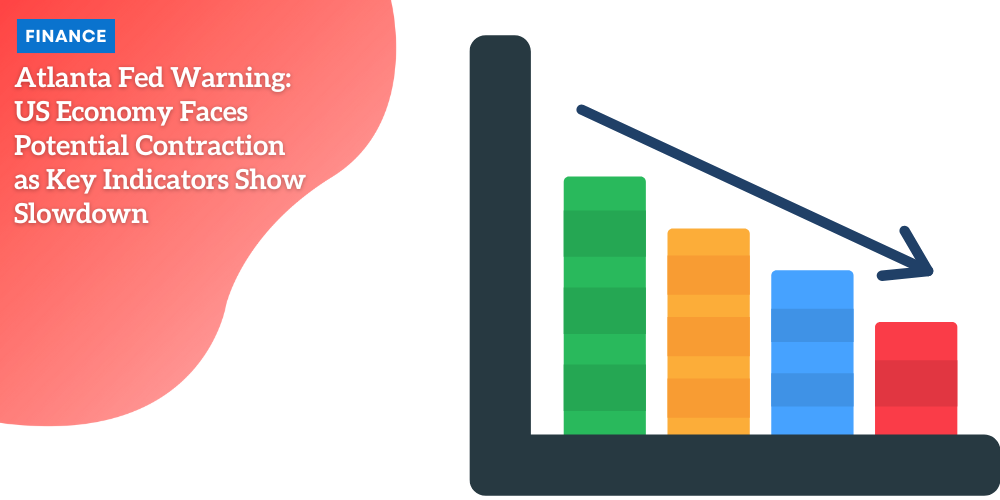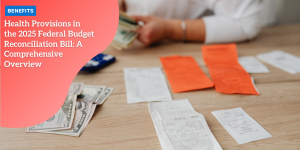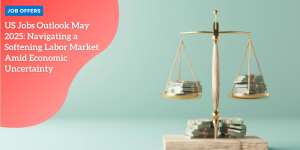Atlanta Fed Warning: US Economy Faces Potential Contraction as Key Indicators Show Slowdown

GDP Growth Forecast Takes a Sharp Downturn
The economic outlook for the first quarter of 2025 has taken a drastic turn according to the Atlanta Federal Reserve’s latest GDPNow tracker.
Anúncios
Previously predicting a growth of 2.3%, the tracker now projects a 1.5% contraction in GDP.
This sudden shift raises alarms for both economists and market participants alike.
Unexpected Setback
Initially, the tracker reflected optimism with potential GDP gains reaching as high as 3.9% in early February 2025.
Anúncios
However, the subsequent influx of data painted a more dismal picture.
Much of this downturn is attributed to weaker-than-expected consumer spending in January, exacerbated by adverse weather conditions.
This left consumers spending 0.2% less than expected, translating to a 0.5% decline when adjusted for inflation.
Anúncios
Sharp Drop in Net Exports
Moreover, the contribution from net exports saw a significant drop.
Early reports showed net exports contributing -0.41 percentage points to the GDP.
That figure has since plummeted to -3.7 percentage points.
This steep decline further darkens the economic forecast indicating a troubled start for the year.
Volatility in Economic Measures
The reliability of the GDPNow tracker, although somewhat volatile, gains accuracy as more data rolls in throughout the quarter.
Despite this inherent variability, the downward trend aligns disturbingly well with other economic indicators.
Mohamed El-Erian, the chief economic advisor at Allianz, emphasized the gravity of the situation on social media, calling it “sobering notwithstanding the inherent volatility of the very high frequency ‘nowcast’ maintained by the Atlanta Fed.”
This underlines the seriousness of the latest projections and the broader concerns about the economy’s trajectory.
Inflation and Job Market Concerns
The gloomy outlook is compounded by inflation and labor market concerns.
The Commerce Department reported a dip in the core personal consumption expenditures price index to 2.6%, a slight but significant decline from December.
Meanwhile, jobless claims have surged to their highest levels since October, adding to the challenges facing policymakers and investors alike.
Market Sentiment and Possible Fed Actions
All these factors have contributed to heightened volatility in the financial markets.
The Dow Jones Industrial Average, though showing a 2% gain for 2025, has experienced significant fluctuations.
Joseph Brusuelas, chief U.S. economist at RSM, hints at looming disruptions, cautioning that market complacency might soon be shattered.
Given the troubling signs, market participants are increasingly convinced that the Federal Reserve will intervene with interest rate cuts to counteract the slowdown.
The probability of a rate cut in June has risen to 80%, with three cuts anticipated throughout the year to bolster the economy.
As the first quarter progresses, the focus will be on how these developments unfold and the subsequent impact on consumer confidence and business investments.
Consumer Spending and Export Challenges
The first quarter of 2025 has brought troubling indicators for the US economy, particularly in terms of consumer spending and exports.
In January, personal spending saw a 0.2% decline, missing the Dow Jones estimate of a 0.1% increase.
When adjusted for inflation, the picture worsens, with spending falling by 0.5%.
This shortfall has significant implications for the economy, as consumer spending is a major driver of GDP growth.
The primary reason for the weaker-than-expected spending appears to have been the inclement weather experienced in January, which kept many consumers indoors and reduced discretionary spending.
This unexpected downturn shaved off a full percentage point from the GDPNow forecast, highlighting how sensitive the economy is to changes in consumer behavior.
Inflation-Adjusted Spending
When we look at the inflation-adjusted numbers, the situation becomes clear.
While nominal spending numbers are important, adjusting for inflation gives a more accurate picture of economic activity.
The 0.5% reduction in inflation-adjusted spending indicates that consumers are tightening their belts, likely in response to broader economic uncertainty and concerns about future income security.
This decline suggests that even as prices stabilize or fall, consumer confidence remains fragile, leading to a more cautious approach to spending.
Net Exports
Compounding the problem are the dismal net export numbers.
The contribution of net exports to GDP plummeted dramatically, tumbling from -0.41 to -3.7 percentage points.
This significant downturn reflects a global environment where US goods are facing reduced demand, possibly due to global economic slowdowns and trade imbalances.
The decline underscores the challenges faced by the US in maintaining export growth amid stiff international competition and fluctuating global demand.
Broader Implications
Both these factors—decreasing consumer spending and a sharp fall in net exports—point to broader issues within the economy.
They contribute to an increasingly grim GDP outlook, bolstered by the Atlanta Fed’s GDPNow tracker which predicts a 1.5% contraction for the first quarter of 2025.
The combination of these weak figures suggests a slowing economic momentum, necessitating careful scrutiny of upcoming fiscal and monetary policies.
The ongoing challenges in the consumer and export sectors add a layer of complexity to the overall economic landscape.
Transition to Labor Market Issues
As we navigate these economic headwinds, our attention must also turn to the labor market.
The rising jobless claims and inflation concerns are equally critical in understanding the broader economic outlook.
The interconnected nature of these issues—consumer spending, exports, unemployment, and inflation—demands a comprehensive approach to policy and decision-making.
The evolving dynamics of the labor market and inflation will be pivotal in determining the trajectory of the US economy in the coming months.

Labor Market and Inflation Concerns
The U.S. economic landscape for Q1 2025 illustrates rising turbulence, with growing concerns about the labor market and inflationary pressures.
As new data comes in, it becomes apparent that the combination of rising jobless claims and fluctuating inflation rates is contributing to economic uncertainty.
Jobless Claims Surge
Recent reports indicate that jobless claims have reached their highest levels since October, underscoring a fragile job market.
The uptick in claims suggests that more individuals are losing their jobs, which poses challenges not only for household stability but also for overall economic health.
Layoffs can lead to decreased consumer spending, which in turn can slow economic growth further. This trend is troubling, especially when considered alongside other negative economic indicators.
Core PCE Price Index Declines
Inflation has shown signs of easing, as evidenced by the drop in the Core Personal Consumption Expenditures (PCE) price index to 2.6%.
This index is a key gauge for the Federal Reserve’s inflation target, and its decline suggests that inflationary pressures might be weakening.
While lower inflation can be beneficial by reducing costs for consumers and businesses, it also raises concerns about potential deflation—where prices could drop so much that they delay consumer spending and investment, leading to further economic stagnation.
A Tangled Web of Economic Uncertainty
The current economic situation presents a tangled web of challenges.
Rising unemployment rates combined with uncertain inflation trends contribute to a confusing and unstable economic environment.
Business investments may suffer as companies hesitate to expand or hire, fearing future economic conditions.
Similarly, consumer confidence is likely to wane amidst fears of job loss and a potentially unstable market, leading to reduced spending.
Mutually reinforcing issues like these create a challenging scenario for policymakers, who must balance promoting growth and preventing inflation.
The Federal Reserve’s anticipated interventions in the coming months will be critical in addressing these economic uncertainties.
Transitioning from labor market issues to the broader financial environment, we will explore how bond market signals and market responses further elaborate on the potential slowdown and volatility in the next segment.
Bond Market Signals and Market Response
The bond market is often a telltale sign of economic sentiment, and recent activities there are sounding alarms.
A significant warning signal emerged when the 3-month Treasury yield surpassed the 10-year note yield, suggesting potential economic slowdown and uncertainty.
This kind of inversion in the yield curve is traditionally seen as a precursor to recessions, implying that the market is bracing for tougher times ahead.
Yield Curve Inversion and its Implications
The 3-month Treasury yield moving above the 10-year note is a classic indicator that investors are seeking more secure, short-term investments over riskier long-term ones.
This shift reflects mounting concerns about the economic outlook, as the market anticipates that the economy may face challenges in the near future.
A yield curve inversion often signals investor expectations of lower growth and potential turmoil for the economy, suggesting that businesses and consumers alike could face financial strain ahead.
Market Volatility and Mixed Reactions
Despite these cautionary signals from the bond market, the Dow Jones Industrial Average has displayed notable volatility but still managed to achieve a surprising 2% gain amidst market fluctuations.
This gain indicates that while there is underlying apprehension, there remains a degree of resilience within equity markets.
However, market complacency might soon come to an end as economic experts predict upcoming disruptions.
According to Joseph Brusuelas, chief U.S. economist at RSM, this period of market optimism may be short-lived as fundamental economic issues start to weigh heavier on investor confidence.
Expert Opinions and Economic Expectations
Economic experts agree that the current market optimism is on shaking ground.
With rising jobless claims and other data pointing towards an economic slowdown, any semblance of stability could be disrupted.
Investors and policymakers are closely watching for further signs of economic deterioration which could validate the bond market’s predictions.
This uncertain economic climate, marked by fluctuating equity markets and shifting investor sentiment, presents significant challenges for decision-makers striving to balance economic stability with growth.
As we move forward, it’s crucial for both investors and policymakers to remain vigilant and responsive to emerging economic indicators.
This climate of uncertainty underscores the need for adaptable strategies in navigating the complex economic terrain.
| Scenario | Before | After (Rate Cuts and Economic Response) |
|---|---|---|
| 📉 Interest Rates | Higher interest rates to control inflation | Multiple rate cuts expected to stimulate economic growth |
| 📊 Economic Growth | Slow growth, facing contractionary pressures | Rate cuts aimed at boosting spending and investment |
| 💵 Borrowing Costs | Higher borrowing costs due to raised interest rates | Lower borrowing costs as interest rates are reduced |
| 📉 Market Signals | Concerns over economic slowdown and recession risks | Rate cuts to stabilize the market and address bond market signals |
| 📈 Inflation and Unemployment | Inflationary pressures with rising unemployment risks | Federal Reserve aims to balance inflation control with job growth |





